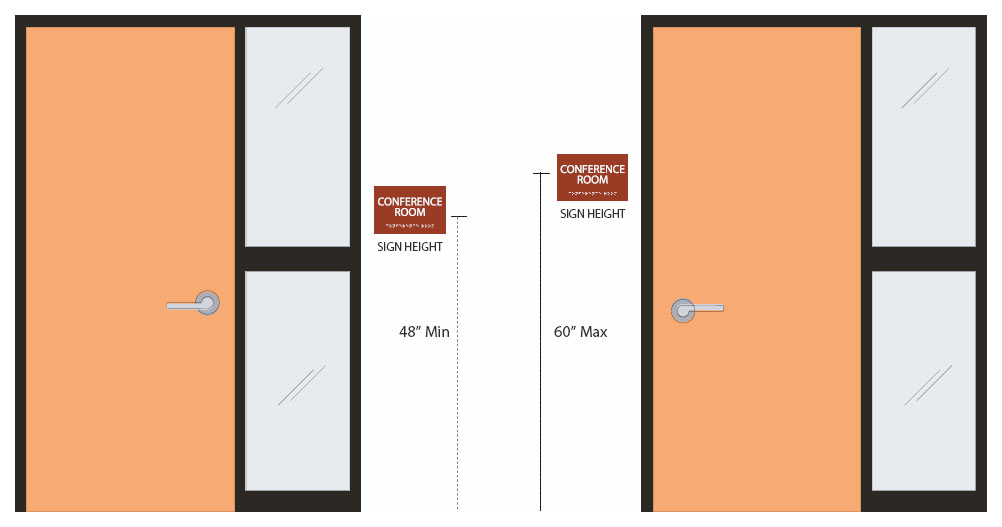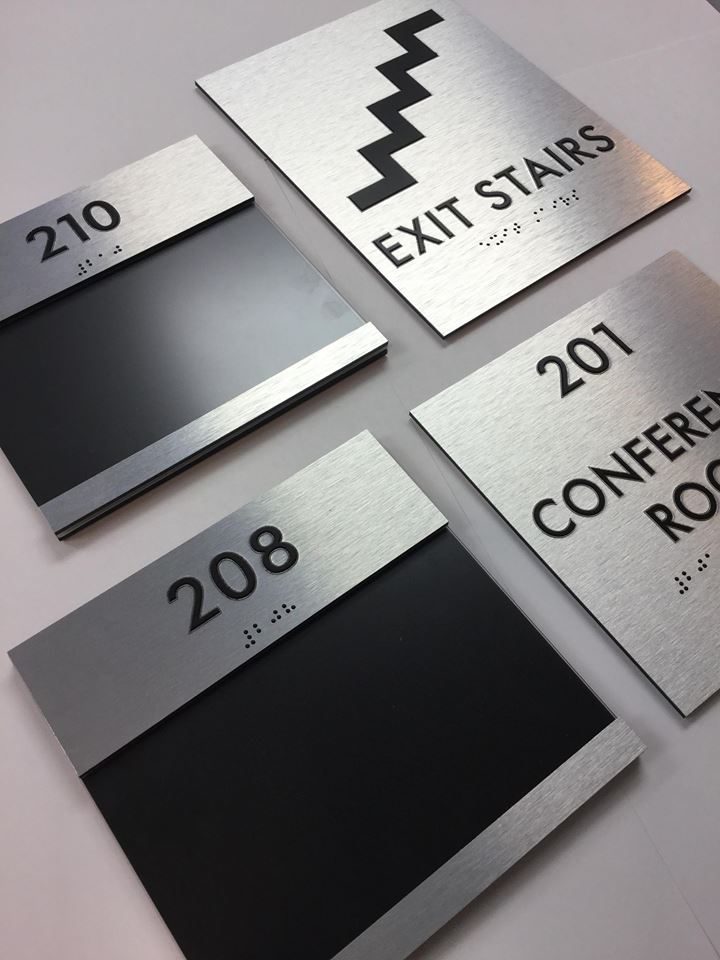ADA Signs: Crucial Devices for Inclusive Settings
ADA Signs: Crucial Devices for Inclusive Settings
Blog Article
Checking Out the Secret Attributes of ADA Indications for Boosted Availability
In the realm of availability, ADA indicators work as silent yet powerful allies, guaranteeing that spaces are inclusive and navigable for individuals with handicaps. By incorporating Braille and tactile elements, these signs break barriers for the aesthetically damaged, while high-contrast color systems and understandable fonts provide to diverse aesthetic demands. Their critical placement is not approximate yet rather a computed effort to assist in seamless navigation. Yet, past these attributes exists a deeper story concerning the evolution of inclusivity and the recurring commitment to creating fair spaces. What much more could these signs indicate in our search of universal ease of access?
Value of ADA Conformity
Ensuring conformity with the Americans with Disabilities Act (ADA) is crucial for fostering inclusivity and equivalent access in public spaces and offices. The ADA, established in 1990, mandates that all public centers, employers, and transportation services accommodate individuals with impairments, ensuring they appreciate the very same rights and opportunities as others. Compliance with ADA requirements not just meets legal obligations but also boosts a company's online reputation by showing its dedication to diversity and inclusivity.
One of the crucial aspects of ADA conformity is the application of obtainable signs. ADA indications are designed to ensure that individuals with impairments can quickly navigate with structures and areas. These indicators need to stick to details standards pertaining to dimension, typeface, shade comparison, and positioning to assure presence and readability for all. Correctly executed ADA signage aids get rid of barriers that people with specials needs frequently encounter, thus advertising their independence and self-confidence (ADA Signs).
Furthermore, sticking to ADA policies can reduce the threat of prospective penalties and lawful repercussions. Organizations that fall short to follow ADA standards might encounter charges or lawsuits, which can be both economically troublesome and destructive to their public picture. Hence, ADA conformity is indispensable to promoting an equitable atmosphere for every person.
Braille and Tactile Aspects
The incorporation of Braille and responsive aspects right into ADA signs embodies the concepts of accessibility and inclusivity. These features are essential for individuals who are blind or aesthetically impaired, enabling them to browse public spaces with better freedom and self-confidence. Braille, a responsive writing system, is necessary in giving composed details in a format that can be conveniently viewed via touch. It is generally placed below the corresponding message on signs to make sure that people can access the info without aesthetic aid.
Tactile aspects prolong past Braille and consist of elevated personalities and signs. These parts are developed to be discernible by touch, permitting individuals to recognize space numbers, toilets, exits, and various other critical areas. The ADA establishes specific standards relating to the dimension, spacing, and placement of these tactile aspects to enhance readability and guarantee consistency across various settings.

High-Contrast Color Design
High-contrast color design play an essential role in enhancing the visibility and readability of ADA signage for people with visual problems. These plans are essential as they make the most of the distinction in light reflectance between text and history, guaranteeing that signs are conveniently noticeable, also from a distance. The Americans with Disabilities Act (ADA) mandates the use of certain color contrasts to suit those with restricted vision, making it a crucial facet of compliance.
The efficiency of high-contrast shades hinges on their capability to stand apart in numerous lighting problems, including poorly lit settings and areas with glow. Normally, dark text on a light history or light text on a dark history is used to accomplish optimum contrast. For instance, black message on a yellow or white background provides a stark visual difference that helps in fast acknowledgment and comprehension.

Legible Fonts and Text Size
When considering the design of ADA signage, the option of clear font styles and proper message dimension can not be overstated. These components are critical for guaranteeing that signs come to people with visual problems. The Americans with Disabilities Act (ADA) mandates that typefaces need to be sans-serif and not italic, oblique, manuscript, extremely ornamental, or of unusual form. These demands help make certain that the text is conveniently readable from a range which the personalities are distinct to varied audiences.
According to visit the site ADA guidelines, the minimum text elevation ought to be 5/8 inch, and it should boost proportionally with checking out range. Consistency in text dimension contributes to a cohesive visual experience, helping individuals in navigating atmospheres effectively.
In addition, spacing in between lines and letters is integral to legibility. Appropriate spacing stops personalities from appearing crowded, boosting readability. By sticking to these requirements, developers can significantly enhance ease of access, guaranteeing that signage serves its intended function for all individuals, no matter of their aesthetic capabilities.
Reliable Placement Techniques
Strategic positioning of ADA signage is important for making best use of access and making sure compliance with legal requirements. ADA standards specify that indicators ought to be placed at a height in between 48 to 60 inches from the ground to guarantee they are within the line of view for both standing and seated individuals.
Additionally, signs have to be put adjacent to the latch side of doors to enable easy recognition prior to entrance. This positioning aids individuals situate areas and spaces without blockage. In situations where there is no door, indicators need to be situated on the closest adjacent wall. Uniformity in indication positioning throughout a facility boosts predictability, lowering complication and boosting general individual experience.

Final Thought
ADA indicators play a vital role in promoting accessibility by integrating features that address the requirements of people recommended you read with specials needs. These aspects jointly promote an inclusive environment, highlighting the relevance of ADA conformity in making sure equal access for all.
In the realm of accessibility, ADA indications serve as silent yet effective allies, making certain that rooms are comprehensive and accessible for individuals with impairments. The ADA, enacted in 1990, mandates that all public centers, companies, and transportation services suit individuals with impairments, guaranteeing they appreciate the exact same rights and opportunities as others. ADA Signs. ADA signs are created to make sure that people with handicaps can conveniently navigate via buildings and areas. ADA standards stipulate that indicators must be installed at an elevation between 48 to 60 inches from the ground to ensure they are within the line of view for both standing and seated people.ADA indications play an essential function in promoting access by integrating features that attend to the needs of people with specials needs
Report this page